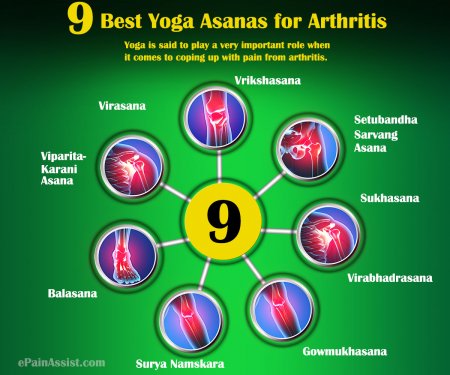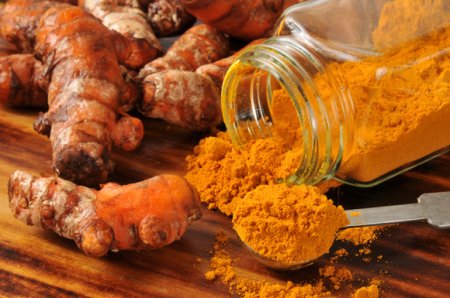If You Suffer From Arthritis Pain
With arthritis comes joint pain. Yet do you know why your joints hurt so much? The series of events that ultimately make you reach for your ice pack or bottle of analgesics involves a complex interaction between your brain and body.
Here’s a look inside the pain process, and how the type of pain you have determines its treatment.
The Pain Process
Though pain is never pleasant, it’s an important signal our bodies use to warn there’s something wrong. Usually, what’s wrong is that you have an injury of some kind, but in some cases what is wrong is that your body is misfiring pain signals.
When you have an injury – in the case of arthritis, an injury to your joints – the damaged tissues release chemicals that alert nearby sensory nerves. These nerves carry the message up your spinal cord to your brain. Your brain processes the message and sends a signal to your motor nerves to take action. So if you start to cut yourself while chopping tomatoes or you touch a hot pan you’ll pull away before you cause more damage.
Besides removing the source of injury, your body has other ways of managing pain. One method is to release painkilling chemicals, called endorphins. The brain also sends signals through the nerves to block additional pain messages from being
received – thereby cutting off the sensation of pain.
Types of Pain
Doctors classify pain into two categories based on its duration:
Acute pain happens when you have a disease or injury. It is part of your body’s warning system. You’ll experience acute pain if you burn your hand on the stove, pull a muscle, have knee surgery or get a kidney stone. The pain may be momentary – the cut of a knife before you pull your hand away. Or, it can last for days or weeks – like a tooth that throbs until you can get to the dentist to have it filled. Some acute pain – for example an arthritis flare or gout attack – comes and goes.
Acute pain often is described as sharp, throbbing, shooting or stinging, though it can also be mild. It usually improves once the cause has been treated. Acute pain that isn’t resolved can eventually turn into chronic pain.
Chronic pain lasts for at least three months, but it can continue for many more months, and even years. Arthritis pain, migraine headaches, nerve damage, and low back pain are examples of this type of pain. Chronic pain is often described as an aching, dull, burning or throbbing.
Pain can continue long-term because there’s no treatment for your condition, or your doctor can’t find the source. Pain can also be self-perpetuating. Over time, the constant barrage of pain signals can change nerve cells in your brain and spinal cord. So even after the injury has healed or the condition has been treated, you’ll still feel the discomfort. In a sense, chronic pain becomes its own disease. This is the case with complex regional pain syndrome, fibromyalgia and other chronic pain conditions.
Pain Mechanisms
Pain is also divided into categories according to its source and characteristics – nociceptive and neuropathic pain being the two most prominent. It’s important to distinguish between the two types, because each is treated differently. Centralized pain is an important and complex category of pain.
Nociceptive pain is the immediate cause-effect pain you feel in the midst of an injury or illness. Nociceptors are receptors around your body that detect when there’s a threat to your body, and signal your brain to respond to that threat. Pain relievers such as NSAIDs (ibuprofen, aspirin) or opioids work well at treating nociceptive pain, because they interrupt the transmission of pain signals from nerves to your brain or from your brain back down to the location of injury.
Neuropathic pain is due to nerve damage that makes pain signals continue to fire, even after the immediate cause has been removed. Neuropathic pain can produce unusual sensations, like a tingling or electric feeling. Neuropathic pain can be especially frustrating because it doesn’t respond well to pain relieving medication. Instead, treatments target the affected nerves. One therapy for neuropathic pain, called neurostimulation, sends an electric current to the spinal cord. This creates an alternate sensation that prevents the original pain signals from reaching the brain.
Doctors traditionally treat arthritis with anti-inflammatory medications and painkillers. However, some medications cause side effects, and a natural approach to pain relief is becoming more popular. Remember to consult your doctor before trying these natural remedies.
1. Lose Weight
Your weight can make a big impact on the amount of pain you experience from arthritis. Extra weight puts more pressure on your joints—especially your knees, hips, and feet.
Reducing the stress on your joints by losing weight will improve your mobility, decrease pain, and prevent future damage to your joints.
2. Get More Exercise
There are more benefits to exercise than just weight loss. Regular movement helps to maintain flexibility in your joints. Weight-bearing exercises like running and walking can be damaging. Instead, try low-impact exercises like water aerobics or swimming to flex your joints without adding further stress. Also Yoga.
3. Use Hot and Cold Therapy
Simple hot and cold treatments can make a world of difference when it comes to arthritis pain. Long, warm showers or baths—especially in the morning—help ease stiffness in your joints. Use an electric blanket or heating pad at night to keep your joints loose and use moist heating pads.
Cold treatments are best for relieving joint pain. Wrap a gel ice pack or a bag of frozen vegetables in a towel and apply it to painful joints for quick relief.
4. Try Acupuncture
Acupuncture is an ancient Chinese medical treatment that involves inserting thin needles into specific points on your body. This is supposed to re-route energies and restore balance in your body.
It is thought that acupuncture has the ability to reduce arthritis pain. If you want to try this treatment method, be sure to find an experienced acupuncturist with good references.
5. Use Meditation to Cope With Pain
Meditation and relaxation techniques may be able to help you reduce pain from arthritis by reducing stress and enabling you to cope with it better. According to the National Institutes of Health (NIH), studies have found that the practice of mindfulness meditation is helpful for some people with painful joints. Researchers also found that those with depression and arthritis benefitted the most from meditation.
6. Ginger
The ginger root is a natural anti-inflammatory that in studies, has been effective in decreasing joint paint and reducing inflammation. The Arthritis Foundation explains ginger works similar to ibuprofen and in some cases, is more effective than traditional pain relievers. To use ginger as a home remedy, drink up to four cups of ginger tea per day. You can also use ginger in sauces, vinaigrettes, chutneys, and granolas.
7. Magnesium
Magnesium is required in over 300 biomechanics responses, including the processes of relieving stiffness and pain. According to Everyday Roots, magnesium is also important for helping bones mineralize. This means magnesium keeps bones strong. To combat arthritis, eat a diet rich in magnesium, which should include dark, leafy greens like spinach, nuts and beans. You can also take a magnesium supplement or apply a topical magnesium oil directly to your joints.
8. Turmeric
The National Center for Complementary and Integrative Health verifies that curcumin, the chemical found in turmeric, may be effective in reducing arthritic inflammation. The pungent yellow spice is delicious and can easily be incorporated into any diet. Make turmeric tea, mix it in with an omelet, or make an Indian curry.
9. Olive Oil
The anti-inflammatory enzymes in cold-pressed extra virgin olive oil work just like Ibuprofen, without the side effects. To add it in your diet, use it instead of butter in various dishes, or apply it topically onto your joints and massage gently. Do this soothing massages twice a day.
10. Consume More Fish
Tuna, salmon, mackerel, and herring contain omega-3 fatty acids which according to the National Center for Complementary and Integrative Health, help relieve tender joints and morning stiffness. Another option to get the daily amount of omega-3 fatty acids, is taking fish oil supplement.
11. Wear gloves to bed
You may feel a bit silly to begin with, but your fingers and wrists will thank you in the morning. Best Health Magazinerecommends wearing snug-fitting gloves to bed to prevent hands from being swollen and stiff in the mornings. You can also wrap a scarf around aching elbows and knees to bring relief.
12. Get More Citrus
Lemons, lime, and oranges are very helpful in the treatment of osteoarthritis due to the high vitamin C content. This vitamin is essential in the formation of the main cartilage components, and it fights against the free radicals that damage the cartilage. To get more Vitamin C, drink water with lemon or lime, and orange juice, or eat more lemons and oranges.
Here’s a look inside the pain process, and how the type of pain you have determines its treatment.
The Pain Process
Though pain is never pleasant, it’s an important signal our bodies use to warn there’s something wrong. Usually, what’s wrong is that you have an injury of some kind, but in some cases what is wrong is that your body is misfiring pain signals.
When you have an injury – in the case of arthritis, an injury to your joints – the damaged tissues release chemicals that alert nearby sensory nerves. These nerves carry the message up your spinal cord to your brain. Your brain processes the message and sends a signal to your motor nerves to take action. So if you start to cut yourself while chopping tomatoes or you touch a hot pan you’ll pull away before you cause more damage.
Besides removing the source of injury, your body has other ways of managing pain. One method is to release painkilling chemicals, called endorphins. The brain also sends signals through the nerves to block additional pain messages from being
received – thereby cutting off the sensation of pain.
Types of Pain
Doctors classify pain into two categories based on its duration:
Acute pain happens when you have a disease or injury. It is part of your body’s warning system. You’ll experience acute pain if you burn your hand on the stove, pull a muscle, have knee surgery or get a kidney stone. The pain may be momentary – the cut of a knife before you pull your hand away. Or, it can last for days or weeks – like a tooth that throbs until you can get to the dentist to have it filled. Some acute pain – for example an arthritis flare or gout attack – comes and goes.
Acute pain often is described as sharp, throbbing, shooting or stinging, though it can also be mild. It usually improves once the cause has been treated. Acute pain that isn’t resolved can eventually turn into chronic pain.
Chronic pain lasts for at least three months, but it can continue for many more months, and even years. Arthritis pain, migraine headaches, nerve damage, and low back pain are examples of this type of pain. Chronic pain is often described as an aching, dull, burning or throbbing.
Pain can continue long-term because there’s no treatment for your condition, or your doctor can’t find the source. Pain can also be self-perpetuating. Over time, the constant barrage of pain signals can change nerve cells in your brain and spinal cord. So even after the injury has healed or the condition has been treated, you’ll still feel the discomfort. In a sense, chronic pain becomes its own disease. This is the case with complex regional pain syndrome, fibromyalgia and other chronic pain conditions.
Pain Mechanisms
Pain is also divided into categories according to its source and characteristics – nociceptive and neuropathic pain being the two most prominent. It’s important to distinguish between the two types, because each is treated differently. Centralized pain is an important and complex category of pain.
Nociceptive pain is the immediate cause-effect pain you feel in the midst of an injury or illness. Nociceptors are receptors around your body that detect when there’s a threat to your body, and signal your brain to respond to that threat. Pain relievers such as NSAIDs (ibuprofen, aspirin) or opioids work well at treating nociceptive pain, because they interrupt the transmission of pain signals from nerves to your brain or from your brain back down to the location of injury.
Neuropathic pain is due to nerve damage that makes pain signals continue to fire, even after the immediate cause has been removed. Neuropathic pain can produce unusual sensations, like a tingling or electric feeling. Neuropathic pain can be especially frustrating because it doesn’t respond well to pain relieving medication. Instead, treatments target the affected nerves. One therapy for neuropathic pain, called neurostimulation, sends an electric current to the spinal cord. This creates an alternate sensation that prevents the original pain signals from reaching the brain.
Doctors traditionally treat arthritis with anti-inflammatory medications and painkillers. However, some medications cause side effects, and a natural approach to pain relief is becoming more popular. Remember to consult your doctor before trying these natural remedies.
1. Lose Weight
Your weight can make a big impact on the amount of pain you experience from arthritis. Extra weight puts more pressure on your joints—especially your knees, hips, and feet.
Reducing the stress on your joints by losing weight will improve your mobility, decrease pain, and prevent future damage to your joints.
2. Get More Exercise
There are more benefits to exercise than just weight loss. Regular movement helps to maintain flexibility in your joints. Weight-bearing exercises like running and walking can be damaging. Instead, try low-impact exercises like water aerobics or swimming to flex your joints without adding further stress. Also Yoga.
3. Use Hot and Cold Therapy
Simple hot and cold treatments can make a world of difference when it comes to arthritis pain. Long, warm showers or baths—especially in the morning—help ease stiffness in your joints. Use an electric blanket or heating pad at night to keep your joints loose and use moist heating pads.
Cold treatments are best for relieving joint pain. Wrap a gel ice pack or a bag of frozen vegetables in a towel and apply it to painful joints for quick relief.
4. Try Acupuncture
Acupuncture is an ancient Chinese medical treatment that involves inserting thin needles into specific points on your body. This is supposed to re-route energies and restore balance in your body.
It is thought that acupuncture has the ability to reduce arthritis pain. If you want to try this treatment method, be sure to find an experienced acupuncturist with good references.
5. Use Meditation to Cope With Pain
Meditation and relaxation techniques may be able to help you reduce pain from arthritis by reducing stress and enabling you to cope with it better. According to the National Institutes of Health (NIH), studies have found that the practice of mindfulness meditation is helpful for some people with painful joints. Researchers also found that those with depression and arthritis benefitted the most from meditation.
6. Ginger
The ginger root is a natural anti-inflammatory that in studies, has been effective in decreasing joint paint and reducing inflammation. The Arthritis Foundation explains ginger works similar to ibuprofen and in some cases, is more effective than traditional pain relievers. To use ginger as a home remedy, drink up to four cups of ginger tea per day. You can also use ginger in sauces, vinaigrettes, chutneys, and granolas.
7. Magnesium
Magnesium is required in over 300 biomechanics responses, including the processes of relieving stiffness and pain. According to Everyday Roots, magnesium is also important for helping bones mineralize. This means magnesium keeps bones strong. To combat arthritis, eat a diet rich in magnesium, which should include dark, leafy greens like spinach, nuts and beans. You can also take a magnesium supplement or apply a topical magnesium oil directly to your joints.
8. Turmeric
The National Center for Complementary and Integrative Health verifies that curcumin, the chemical found in turmeric, may be effective in reducing arthritic inflammation. The pungent yellow spice is delicious and can easily be incorporated into any diet. Make turmeric tea, mix it in with an omelet, or make an Indian curry.
9. Olive Oil
The anti-inflammatory enzymes in cold-pressed extra virgin olive oil work just like Ibuprofen, without the side effects. To add it in your diet, use it instead of butter in various dishes, or apply it topically onto your joints and massage gently. Do this soothing massages twice a day.
10. Consume More Fish
Tuna, salmon, mackerel, and herring contain omega-3 fatty acids which according to the National Center for Complementary and Integrative Health, help relieve tender joints and morning stiffness. Another option to get the daily amount of omega-3 fatty acids, is taking fish oil supplement.
11. Wear gloves to bed
You may feel a bit silly to begin with, but your fingers and wrists will thank you in the morning. Best Health Magazinerecommends wearing snug-fitting gloves to bed to prevent hands from being swollen and stiff in the mornings. You can also wrap a scarf around aching elbows and knees to bring relief.
12. Get More Citrus
Lemons, lime, and oranges are very helpful in the treatment of osteoarthritis due to the high vitamin C content. This vitamin is essential in the formation of the main cartilage components, and it fights against the free radicals that damage the cartilage. To get more Vitamin C, drink water with lemon or lime, and orange juice, or eat more lemons and oranges.
- Health / Disease
- 23-12-2016, 14:24
- 1 406
- Pharmatic




